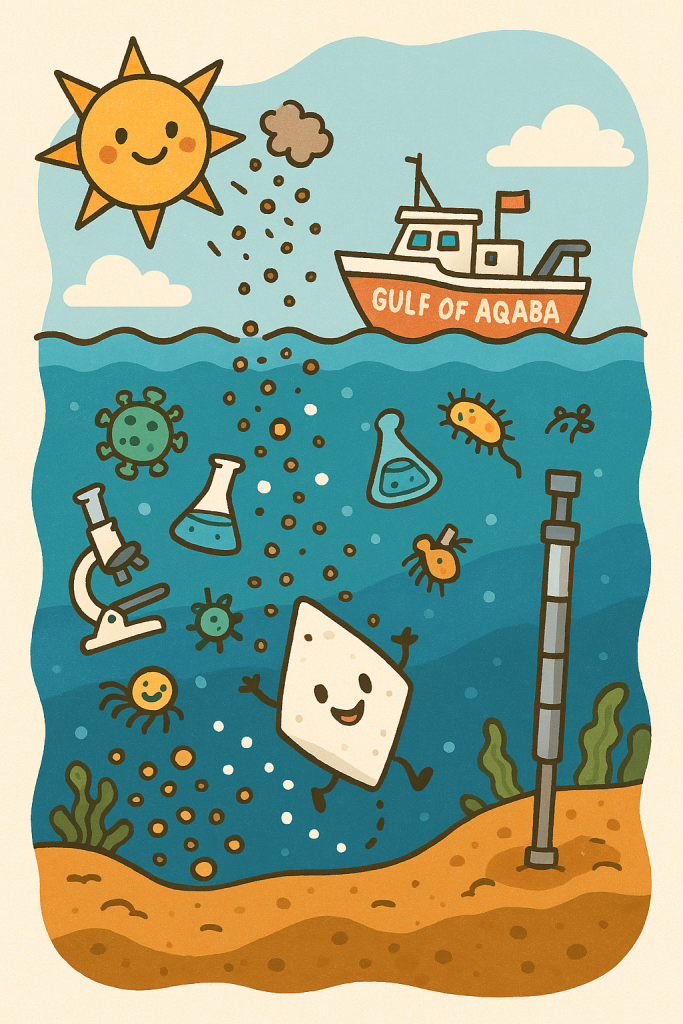Paper in press: Barium in the Red Sea
I’m excited to share that our recent study, led by Kim Mayfield, has been published in Frontiers in Earth Science. In this research, we set out to understand the barium cycle in the Gulf of Aqaba, located in the northern Red Sea. To do this, we collected an extensive set of samples—including aerosols, groundwater, seawater, sediment traps, and sediments—as part of the long-term Red Sea Dust, Marine Particulates, and Seawater Time Series. Our study centered around three main questions:
- What is the isotopic offset between dissolved and particulate barium during particle formation?
- How do changes in environmental conditions—like dust fluxes, biological productivity, and temperature—affect barium isotope fractionation?
- How is the barium isotope signature in seawater passed on to marine sediments, and how does it change during burial?
What did we learn?
Before getting into the results, it’s worth first highlighting that we observed a uniform barium concentration and isotopic composition in the Gulf of Aqaba—through space and time. This uniformity likely reflects the relatively weak biogeochemical cycling of barium in the Gulf (relative to physical mixing), with the barium chemistry largely inherited directly from the Red Sea. Thanks to this uniformity, we could directly compare sinking particles with seawater without needing to guess where in the water column the particles formed—conditions are the same from top to bottom.
When we made this comparison, we consistently found that particulate barium is about 0.5 ‰ lighter than dissolved barium. This offset was stable across all depths and time points we sampled. Interestingly, this result is in close agreement with findings from other regions like the South Atlantic and the South China Sea. However, our study provides an important new constraint: it confirms that this isotopic offset holds steady even in the unique, hot, and salty environment of the Gulf of Aqaba. We also looked at the barite found in the underlying sediments. Here, we discovered that the barium isotope composition was about 0.2 ‰ heavier than that of the sinking particles. While the exact reasons for this offset aren’t completely clear, we suspect processes like diagenetic alteration or interactions with pore waters could play a role.
This study was fun to conduct because it’s one of the first to track barium isotopes across the complete ‘source-to-sink’ pathway—from groundwater to seawater, to sinking particles, and finally to buried sediments. Our findings strengthen the foundation for using barium isotopes as a paleoceanographic proxy, even in environments quite different from those studied before. At the same time, our results also highlight the need for further research to fully understand how barium isotope signals are preserved during burial.
Citation: Mayfield, K. K., Horner, T. J., Torfstein, A., Auro, M. E., Crockford, P. W., & Paytan, A. (2024). Barium cycling in the Gulf of Aqaba. Frontiers in Earth Science, 12, 1178487. doi:10.3389/feart.2024.1178487.

DALL-E 3’s interpretation of the study
